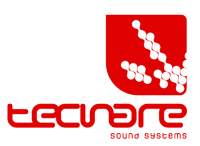Phase Interference and Coherence in Sound Systems
Avoid destructive interference and optimize clarity by mastering phase alignment, polarity, and DSP in professional speaker system design and tuning.
One of the most significant challenges in sound system design is managing interference between sound sources. When multiple speakers emit sound simultaneously, reinforcement or cancellation phenomena can occur due to wave overlap. The key to avoiding these issues is understanding phase coherence and applying advanced alignment techniques in system design and tuning.
In this article, we will explore how interference affects sound distribution, what phase coherence is, and how to optimize speaker systems using tools such as DSP processing and time alignment.
What Is Interference in Sound Systems?
Interference occurs when two or more sound waves combine at the same point in space. Depending on their phase relationship, these waves can either add up or cancel each other out.
Types of Interference
- Constructive Interference: Occurs when two waves are in phase (their peaks and valleys align). This results in an increase in sound pressure level (SPL).
- Destructive Interference: Happens when two waves are out of phase (the peaks of one coincide with the valleys of the other). This causes a reduction in SPL or even total cancellation.
📌 Practical Example:
If two IBZA Series speakers are installed in a stereo system without proper time alignment, mid frequencies may cancel out at certain points in the room, affecting sound clarity.
2. What Is Phase Coherence?
Phase coherence describes the time relationship between sound waves emitted by different speakers in a system. A system with good phase coherence maintains spectral integrity and ensures accurate sound reproduction throughout the venue.
Factors Affecting Phase Coherence:
- Differences in arrival time: If one speaker is farther away than another, its sound will arrive with a delay, causing interference.
- Polarity differences: If a speaker is wired with reversed polarity, it will create cancellations at certain frequencies.
- System phase response: Some processors and filters can modify the phase of certain frequencies, affecting coherence.
📌 Practical Example:
In a system with SW Series subwoofers and Array Series line arrays, if the subwoofers are not phase-aligned with the main speakers, cancellation may occur in the crossover frequency range, reducing bass impact for the audience.
3. Techniques to Optimize Phase Coherence
Time Alignment (Delay Alignment)
To correct arrival time differences, digital delays are applied to the closer speakers.
Formula to calculate delay:
Where:
- t = Delay time in seconds
- d = Distance difference between sources (in meters)
- c = Speed of sound (approximately 343 m/s at room temperature)
📌 Practical Example:
If a set of V Series speakers is positioned 3 meters closer to the audience than the Array Series speakers, the necessary delay to align the system would be:
This delay can be applied using a DSP processor integrated into T Series or TDAP Series amplifiers.
Polarity Correction
Before adjusting delay, it is essential to verify the polarity of all speakers. Reversing the polarity of a low-frequency component, for example, can cause severe cancellation in the crossover with mid-range speakers.
📌 Practical Example:
If an SW218V subwoofer is out of phase with the mid and high-frequency speakers, inverting its polarity in the TDAP5.0 amplifier’s DSP can restore system coherence.
Using Digital Signal Processing (DSP)
Signal processors allow fine-tuning adjustments to optimize the system’s phase response.
Key DSP functions in T Series and TDAP Series amplifiers:
- Alignment filters: Applying high-pass and low-pass filters to minimize crossover mismatches.
- Phase correction: Precise phase adjustments at specific bands to optimize signal summation.
- Linear-phase EQ: Correcting anomalies without altering amplitude response.
📌 Practical Example:
In a stadium sound reinforcement system, linear-phase filters in the DSP of TDAP Series amplifiers can be used to maintain coherence between different speaker zones.
4. Case Study: Phase Coherence Optimization at an Outdoor Festival
Scenario:
A festival uses a sound system with Array Series line arrays and SW Series subwoofers. Bass cancellations and midrange clarity loss are detected.
Solution:
✔ Polarity check:
- All subwoofer connections were reviewed, and some were found to be inverted.
- Polarity was corrected in the DSP processor.
✔ Time alignment:
- The distance difference between the subwoofers and main speakers was measured.
- A 5 ms delay was applied to the subwoofers using a TDAP3.0 amplifier.
✔ Correction with EQ and filters:
- High-pass filters at 80 Hz and low-pass filters at 120 Hz were set to optimize signal summation.
- Corrective EQ was applied to reduce peaks at 200 Hz, which were causing unwanted coloration.
✔ Testing and validation:
- Real-time spectrum analyzer (RTA) measurements were taken to confirm phase coherence improvements.
- Response was checked at different venue points to ensure uniform coverage.
Results:
✅ Elimination of low-frequency cancellations.
✅ Increased midrange clarity and improved speech intelligibility.
✅ Homogeneous SPL distribution across the audience.
Conclusion
Phase coherence is a critical factor in the design and tuning of professional sound systems. Understanding how interference affects system response and applying techniques such as time alignment, polarity correction, and DSP processing can make the difference between poor sound and an exceptional listening experience.
If you need to optimize phase coherence for an event or a fixed installation, our team is ready to provide consulting and advanced tuning tools.
Featured Articles
Explore Other Topics
Acoustic Science
Audio Technology
Sound Design
Music Production
Environmental Acoustics
Psychoacoustics
Audio Engineering
Sound History
Tecnare
Loudspeakers Series
E Series
IBZA Series
V Series
ALIS Series
Array Series
SW Series
KT Series
TANIT Series
CS Series
Amplifiers Series
Digital Processors
Accessories


